Traumatic pancreatic injuries are rare, but missed or delayed diagnosis can result in significant morbidity and mortality. In blunt trauma, the midbody of the pancreas can be compressed against the spine and contused or even transected. Unrestrained drivers and bicyclists who hit handlebars are both at particular risk for this injury. Patients may have few symptoms at presentation, and initial CT scans can even be normal. Even in apparently minor injuries, symptoms may develop after several days as digestive pancreatic enzymes are released into retroperitoneal tissues.
Ultrasonography is of limited utility in the acute setting for evaluation of pancreatic injuries, but if performed, it may show hypoechoic defects within the parenchyma. CT is much more sensitive for detection of pancreatic injuries and reveals focal or diffuse edema, low-attenuation lesions, peripancreatic fluid, fat stranding, retroperitoneal hematoma, or combinations of these findings.
One should specifically examine the main pancreatic duct to assess for transection, as such injuries often require endoscopic retrograde cholangiopancreatography (ERCP) with stent placement for management. In other cases, surgical intervention may be required.
Complications of pancreatic trauma include pancreatitis, fistula, retroperitoneal abscess, pseudoaneurysm, or pseudocyst.
Isolated pancreatic injury following a bicycle accident
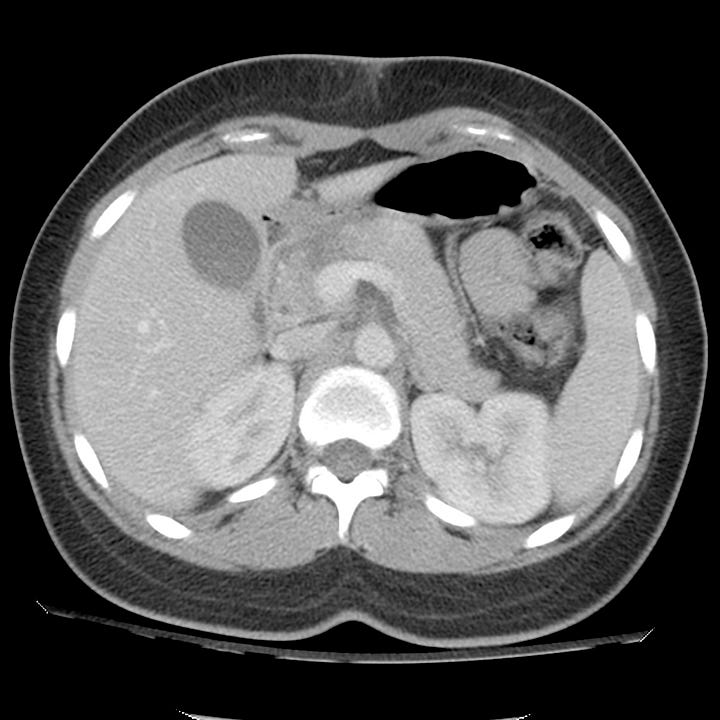
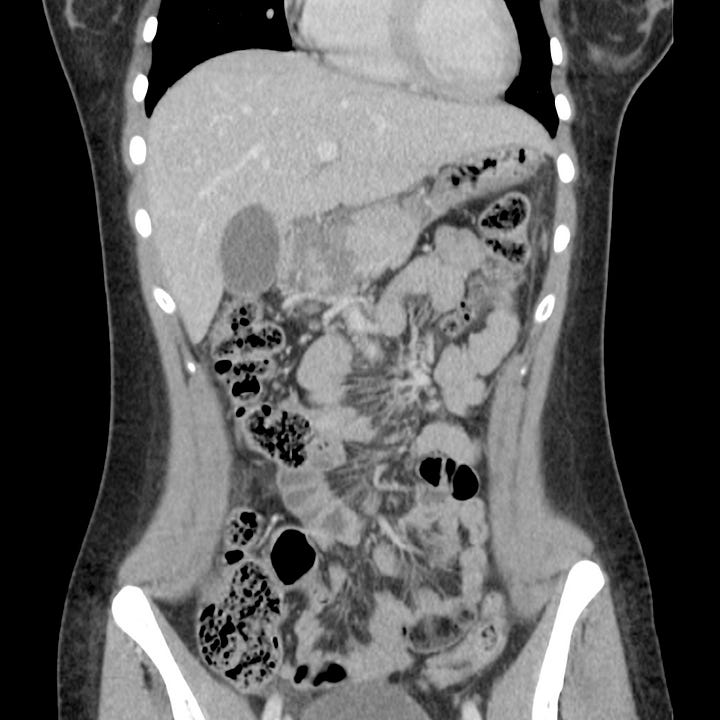
Initial examination. Well-defined low-attenuation lesion at junction of head and body of pancreas. Minimal associated peripancreatic edema. The pancreatic duct is not visible. Liver, kidneys, and spleen are normal.
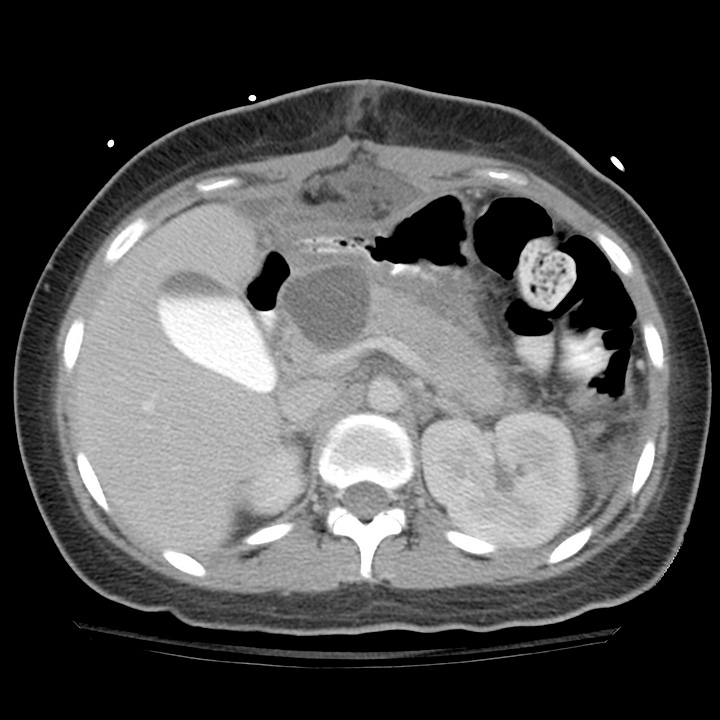
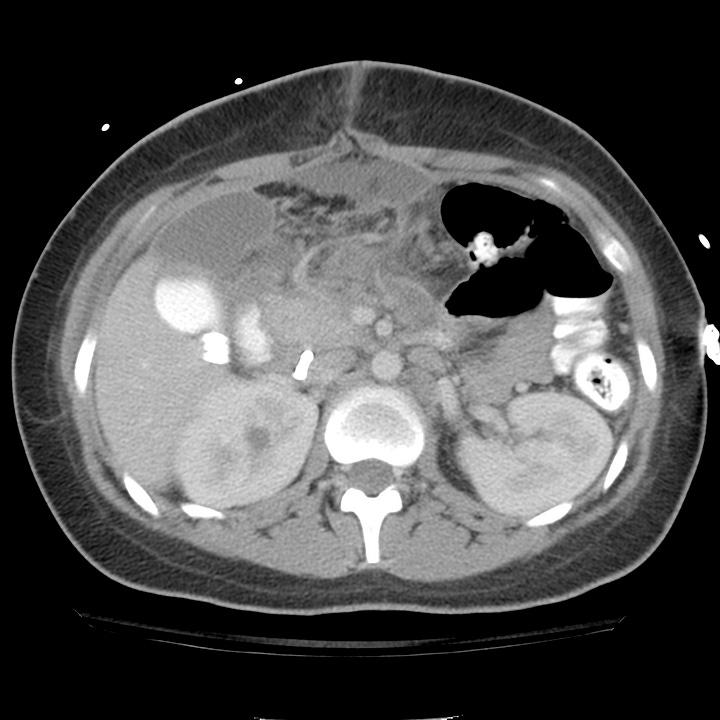
Two weeks post injury—intraperitoneal fluid collections. Intrapancreatic collection at the site of pancreas fracture and multiple intraperitoneal fluid collections, several of which required surgical/interventional drainage.
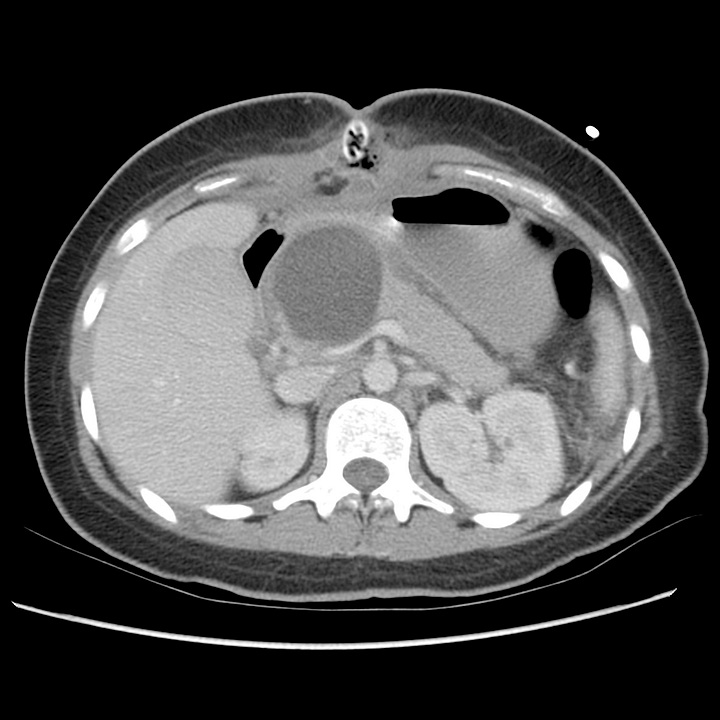
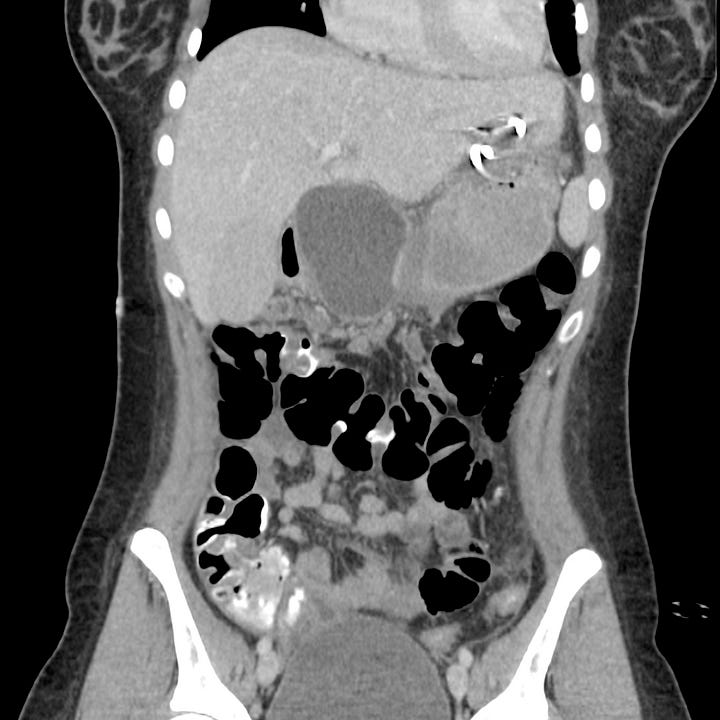
Eight weeks post injury—pseudocyst formation. The intrapancreatic collection remains well defined, consistent with pseudocyst formation. Abscess drainage catheters are located between the stomach and left hepatic lobe and deep to the umbilicus.



